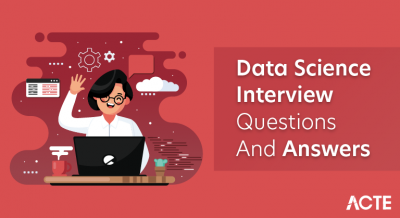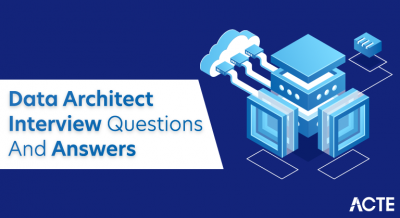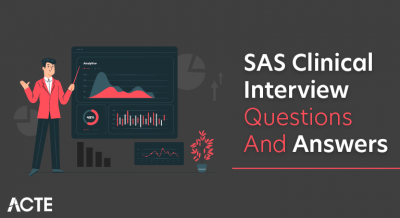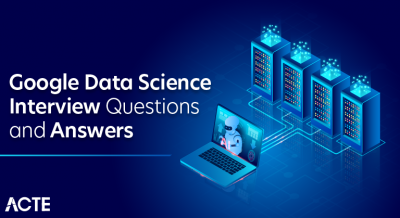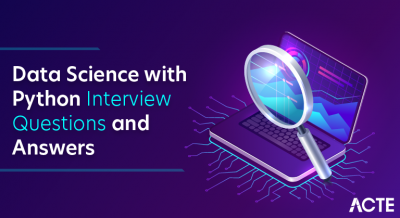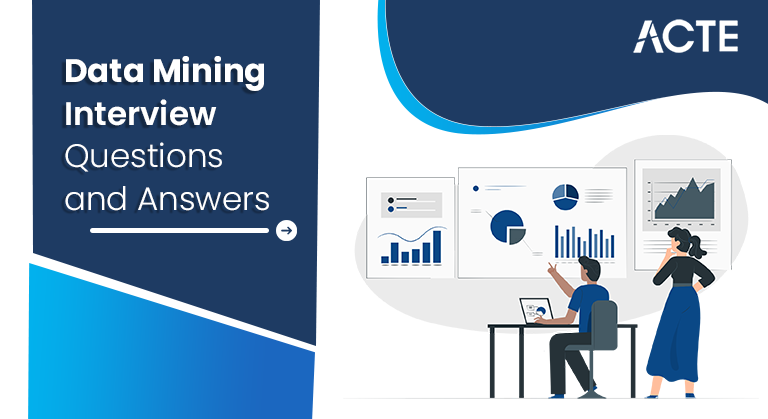
Our Data Mining Interview Questions encompasses a series of commonly asked queries posed to individuals seeking positions in the data mining field. These questions are designed to evaluate the candidate’s expertise in diverse aspects of data mining, such as data preprocessing, feature selection, model development, and evaluation. Interviewers may probe candidates on their knowledge of algorithms like decision trees, clustering techniques, and association rule mining. Candidates are typically expected to showcase their proficiency in data cleaning and transformation, along with their ability to interpret and communicate findings derived from mined data. Moreover, inquiries may extend to practical applications of data mining in real-world scenarios, highlighting the candidate’s problem-solving abilities and practical insights into utilizing data for business or research objectives.
1. What is data mining?
Ans:
Data mining is the process of discovering patterns, trends, correlations, or valuable information from large datasets. It entails utilising a range of methods and algorithms to extract knowledge and insights that can be used for decision-making, prediction, and other analytical purposes.
2. Explain the critical steps in the data mining process.
Ans:
- Data Collection: Compile pertinent information from a range of sources.
- Data Cleaning: Handle missing values, correct errors, and ensure data quality.
- Data Exploration: Understand the characteristics of the data through statistical analysis and visualisation.
- Feature Selection: Choose relevant variables for analysis.
- Data should be transformed into an analysis-ready format.
- Model Building: Apply data mining algorithms to build models.
- Evaluation: Assess model performance using metrics and validation techniques.
- Deployment: Implement the model for real-world use.

3. Differentiate between data mining and traditional database query.
Ans:
Data Mining:
- Focuses on discovering patterns and knowledge from large datasets.
- Involves complex algorithms for analysis.
- Used for prediction, classification, clustering, and association rule mining.
Traditional Database Query:
- It involves retrieving specific information from a database based on predefined queries.
- Primarily used for data retrieval and simple operations.
- Does not involve sophisticated analysis or pattern discovery.
4. What are the main goals of data mining?
Ans:
The main goals of data mining includes:
- Prediction: Generate models to predict future trends or behaviours.
- Classification: Categorize data into predefined classes or groups.
- Clustering: Group similar data points together to discover patterns.
- Association Rule Mining: Identify associations and patterns that co-occur in the data.
- Anomaly Detection: Detects unusual patterns or outliers.
5. Describe the concept of data preprocessing in data mining.
Ans:
Cleaning and converting unprocessed data into a format that may be used for analysis. It includes data cleaning, integration, transformation, reduction, and discretization to ensure data quality and prepare it for effective data mining.
6. What is the role of pattern evaluation in data mining?
Ans:
Pattern evaluation involves assessing the discovered patterns’ quality, relevance, and usefulness. It includes validation, interpretation, comparison, and utilisation of patterns to ensure they meet the goals of the data mining process.
7. How do you explore and understand the characteristics of a dataset before applying data mining techniques?
Ans:
Before applying data mining techniques, explore dataset characteristics by:
- Calculating descriptive statistics.
- Visualising data through histograms, box plots, etc.
- Analysing data distribution and relationships.
- Detecting outliers.
- Profiling key attributes.
8. Explain the importance of data visualisation in the context of data mining.
Ans:
Data visualisation is crucial in data mining because it:
- Enhances understanding of complex patterns.
- Facilitates pattern recognition.
- Communicates insights effectively.
- Supports decision-making with explicit representations.
9. What are the common types of data visualisation techniques used in data mining?
Ans:
Standard data visualisation techniques include:
- Scatter Plots
- Bar Charts and Histograms
- Line Charts
- Pie Charts
- Heatmaps
- Box Plots
- Network Diagrams
- Bubble Charts
- Tree Maps
- Word Clouds
10. What are the steps involved in data preprocessing?
Ans:
Steps in Data Preprocessing:
- Data Cleaning: Handle missing values and correct errors.
- Data Integration: Combine data from multiple sources.
11. Explain the concept of data cleaning in data preprocessing.
Ans:
Data cleaning involves identifying and handling errors, inconsistencies, and missing values in a dataset. It includes tasks such as:
- Removing duplicate records.
- Correcting inaccurate data.
- Handling missing values.
- Standardizing formats.
12. How do you handle missing values in a dataset?
Ans:
Handling missing values can involve:
- Deleting rows or columns with missing values.
- Imputing missing values using statistical measures like mean or median.
- Predictive modelling to estimate missing values.
- Using advanced imputation techniques.
13. What is data transformation, and why is it essential to preprocessing?
Ans:
Data transformation involves converting data into a suitable format for analysis. It includes normalization, aggregation, and encoding. Transformation is essential to ensure data consistency, improve model performance, and meet the assumptions of specific algorithms.
14. Differentiate between supervised and unsupervised learning.
Ans:
| Criteria | Supervised Learning | Unsupervised Learning | |
| Objective |
Involves predicting output using labeled training data and input features. |
Focuses on uncovering patterns or structures in data without predefined output. | |
| Training Data | Relies on labeled training data with known input-output pairs. | Works with unlabeled data where training data lacks predefined output. | |
| Output |
Generates a model for predicting or classifying new, unseen data based on learning from labeled examples. |
Identifies hidden patterns, relationships, or clusters within the data. | |
| Task Examples | Common tasks include classification and regression. | Involves clustering, association, and dimensionality reduction. | |
| Guidance during Training |
Requires guidance from a supervisor or teacher algorithm during the learning process. |
Learns autonomously without explicit guidance; focuses on self-discovery. | |
| Evaluation |
Performance evaluation is based on the accuracy of predictions against actual labels in the test data. |
Evaluation often involves assessing the quality of discovered patterns or clusters. | |
| Example Algorithms | Examples include Decision Trees, Support Vector Machines, and Neural Networks. | Examples include K-Means Clustering, Hierarchical Clustering, and the Apriori Algorithm. |
15. What is classification in data mining?
Ans:
Classification is a data mining technique where the goal is to categorize data into predefined classes or labels based on the characteristics of the input variables. It involves training a model on labelled data to predict new, unseen data.
16. Explain the concept of clustering.
Ans:
Clustering involves grouping similar data points based on their inherent similarities. This method of unsupervised learning is beneficial. Discover natural structures or patterns in the data.
17. Describe the association rule mining technique.
Ans:
Association rule mining identifies exciting relationships between variables in a dataset. It aims to discover rules describing how items or events occur together. An example is market basket analysis in retail.
18. What is regression analysis in the context of data mining?
Ans:
One data mining approach is regression analysis for predicting a continuous numerical outcome. It models the relationship between dependent and independent variables to make predictions.
19. Explain the difference between decision trees and random forests.
Ans:
Decision Trees:
- A model that resembles a tree and bases decisions on the values of input features.
- Prone to overfitting.
Random Forests:
- Ensemble of decision trees.
- Reduces overfitting by aggregating predictions from multiple trees.
20. What is the k-nearest neighbours (KNN) algorithm, and how does it work?
Ans:
KNN is a supervised learning algorithm employed in regression and categorization. A new data point is categorized using the majority class of its k-nearest neighbours in the feature space.
21. Describe the working of the k-means clustering algorithm.
Ans:
K-means clustering partitions a dataset into k clusters by repeatedly allocating data points closest to the mean cluster and updating the cluster centroids. The sum of squared distances inside each cluster is what it seeks to decrease.
22. What is a support vector machine (SVM), and how is it used in data mining?
Ans:
By repeatedly allocating data points to the cluster that is closest to used for classification and regression tasks. It finds a hyperplane that best separates data points into different classes while maximising the margin between them.
23. How do you evaluate the performance of a data mining model?
Ans:
Model evaluation involves accuracy, precision, recall, F1 score, area under the curve (AUC) and ROC curves. The choice depends on the nature of the problem (classification, regression) and the specific goals of the analysis.
24. What are precision and recall, and why are they essential metrics in classification?
Ans:
- Precision is the ratio of positively expected observations that come true to all predicted positives.
Remember: The proportion of accurately anticipated positive observations to all other positives.
- It is essential in classification to balance false positives and false negatives.
25. Explain the concept of overfitting and how to avoid it in data mining models.
Ans:
When a model learns the training data—which includes noise—too well, it is said to be overfit. And performs poorly on new data. Avoid overfitting using simpler models, feature selection, cross-validation, and regularisation techniques.
26. What is cross-validation, and why is it used in data mining?
Ans:
Cross-validation is a technique to divide the data into several groups to evaluate a model’s performance for training and testing. It helps ensure the model generalises well to new, unseen data.
27. How does data mining differ when applied to big data?
Ans:
- Deals with large volumes of data.
- Requires scalable algorithms and distributed computing.
- Focuses on parallel processing and efficient storage.
28. Explain the challenges of mining data from large datasets.
Ans:
- Scalability issues.
- Processing and analysing vast amounts of data.
- Storage and retrieval challenges.
- Ensuring data quality and consistency.
29. What is Hadoop, and how is it related to big data and data mining?
Ans:
Hadoop is an open-source architecture for processing and storing massive datasets in a distributed manner. It consists of MapReduce and the Hadoop Distributed File System (HDFS),
providing a platform for big data analytics and facilitating data mining on large datasets.
30. Describe the process of text mining.
Ans:
Text mining involves extracting valuable insights and patterns from unstructured text data. It includes tasks such as:
- Text preprocessing (tokenization, stemming).
- Text representation (vectorization).
- Sentiment analysis, topic modelling, and information extraction.
31. What are the challenges in extracting information from unstructured text data?
Ans:
- Ambiguity and variability in language.
- Lack of standardised formats.
- Handling large volumes of data.
- Dealing with noise and irrelevant information.
- Recognizing and resolving entity references.
32. Explain the concept of web mining.
Ans:
Web mining involves extracting valuable patterns and information from web data. It includes three main types:
- Web Content Mining: Extracts helpful information from web page content.
- Web Structure Mining: Analyses the link structure of the web.
- Web Usage Mining: Examines user interactions with websites.
33. What is a data warehouse, and how is it different from a database?
Ans:
Data Warehouse:
- centralised location for organising and keeping huge amounts of information historical data.
- Optimised for analytical queries and reporting.
- Supports decision-making processes.
Database:
- General-purpose storage for transactional data.
- Designed for efficient data retrieval and updates.
- Used for day-to-day operations of an organisation.
34. How does data warehousing support data mining activities?
Ans:
- Providing a consolidated and consistent view of historical data.
- It preserves data in an analysis-ready format.
- I am assisting in the integration of information from many sources.
- We are offering a platform for efficient querying and reporting.
35. Explain the concept of OLAP (Online Analytical Processing).
Ans:
OLAP (Online Analytical Processing) is a software tool that enables users to analyse multidimensional information interactively. Users may quickly examine and evaluate data using it and from different perspectives, facilitating complex queries and reporting.
36. What are the ethical considerations in data mining?
Ans:
- Privacy of individuals.
- Informed consent for data collection.
- Transparency in model building and decision-making.
- Fairness and non-discrimination.
- Responsible use of results.
37. How can privacy concerns be addressed in data mining projects?
Ans:
- Obtaining informed consent for data collection.
- Anonymizing or de-identifying sensitive information.
- Implementing strict access controls.
- Applying differential privacy techniques.
- Complying with relevant privacy regulations.
38. Explain the concept of anonymization in the context of data mining.
Ans:
Anonymization involves removing or modifying personally identifiable information (PII) from a dataset to protect individuals’ privacy. Techniques include generalisation, suppression, and perturbation to ensure that individuals cannot be re-identified.
39. Provide examples of industries where data mining is commonly used.
Ans:
- Retail (for customer segmentation and market basket analysis).
- Finance (for fraud detection and risk analysis).
- Healthcare (for patient outcome prediction and disease diagnosis).
- Telecommunications (for customer churn prediction).
- Marketing (for targeted advertising and campaign analysis).
40. How can data mining be applied in healthcare?
Ans:
In healthcare, data mining can be applied for:
- Predictive modelling of patient outcomes.
- Disease diagnosis and prognosis.
- Fraud detection in healthcare insurance claims.
- Personalised medicine and treatment optimization.
- Identifying patterns in electronic health records for better decision-making.
41. Describe a real-world scenario where association rule mining could be helpful.
Ans:
In retail, association rule mining can be helpful for market basket analysis. For example, suppose customers frequently purchase items A and B together. In that case, a retailer can use association rules to recommend item B to customers who have already added item A to their shopping cart, thereby increasing sales.
42. Name some popular data mining tools and explain their features.
Ans:
- IBM SPSS Modeler: Enables predictive modelling and advanced analytics.
- RapidMiner: Open-source tool for data science, including data mining.
- Weka: Offers an assortment of algorithms for machine learning.
- KNIME: Allows visual data exploration and analysis.
43. How does Python contribute to data mining, and what libraries are commonly used?
Ans:
Data mining uses Python extensively because of its versatility and extensive libraries. Common libraries include:
A selection of machine learning algorithms is available from Scikit-learn.
- Pandas: Provides data manipulation and analysis tools.
- NumPy and SciPy: Support scientific computing and mathematical operations.
- NLTK and spaCy: Used for natural language processing tasks.
44. Explain the role of SQL in data mining.
Ans:
SQL (Structured Query Language) is used in data mining to query and manipulate data stored in relational databases. It is commonly used to retrieve and preprocess data before applying mining algorithms.
45. What is a neural network, and how is it used in data mining?
Ans:
A neural network is a computer model based on the architecture of the human brain. In data mining, neural networks are used for tasks like classification and regression. They consist of interconnected nodes (neurons) organised in layers and can learn complex patterns from data.
46. Describe the concept of deep learning and its relevance to data mining.
Ans:
Deep learning is machine learning that uses multi-layered neural networks (deep neural networks). It is relevant to data mining as it can automatically learn hierarchical representations of data, allowing it to capture intricate patterns and relationships.
47. How are recurrent neural networks (RNNs) applied in data mining?
Ans:
Recurrent Neural Networks (RNNs) are used for sequence-based data mining tasks. They have memory capabilities, making them suitable for tasks like time series prediction, natural language processing, and speech recognition.
48. What is feature selection, and why is it important in data mining?
Ans:
Feature selection involves choosing the most relevant features (variables) for analysis. It is essential in data mining because:
- Reduces dimensionality, improving computational efficiency.
- It prevents overfitting by focusing on the most informative features.
- Enhances model interpretability.
49. Explain the concept of dimensionality reduction.
Ans:
The goal of dimensionality reduction is to decrease the number of variables. (dimensions) in a dataset while preserving its essential information. It helps address the curse of dimensionality, improves computational efficiency, and can lead to more straightforward and more interpretable models.
50. Name some techniques for dimensionality reduction.
Ans:
Popular techniques for dimensionality reduction include:
- Principal Component Analysis (PCA): A linear technique that transforms data into a new coordinate system.
- T-Distributed Stochastic Neighbour Embedding (t-SNE): Non-linear technique for visualising high-dimensional data.
- Autoencoders: Neural network-based technique for unsupervised learning and representation learning.
51. How does data mining contribute to business intelligence?
Ans:
Data mining contributes to business intelligence by getting valuable patterns and information out of big datasets.
- Supporting better decision-making through predictive modelling.
- Identifying trends and opportunities in the market.
- Enabling businesses to understand customer behaviour and preferences.
52. Explain the role of data mining in customer relationship management (CRM).
Ans:
- Identify customer segments and profiles.
- Predict customer preferences and behaviours.
- Optimise marketing strategies for customer acquisition and retention.
- Personalise customer interactions and improve overall customer satisfaction.
53. Describe a scenario where data mining can be applied to improve business decision-making.
Ans:
A retail company uses data mining to analyse sales data, customer demographics, and purchasing patterns. By applying association rule mining, the company discovers frequent item sets, enabling it to create targeted promotions and optimise inventory management. This improves decision-making by aligning marketing strategies with customer preferences and reducing excess inventory costs.
54. How can data mining be applied to analyse social media data?
Ans:
Data mining can analyse social media data by:
- Extracting sentiment from posts and comments.
- Identifying trends and popular topics.
- Analysing user behaviour and preferences.
- Recommending personalised content or products.
- Detecting anomalies or emerging issues.
55. Explain sentiment analysis and its relevance in social media data mining.
Ans:
Sentiment analysis involves determining the sentiment expressed in text data, such as positive, negative, or neutral. In social media data mining, sentiment analysis helps businesses understand public opinion, customer satisfaction, and brand perception, providing valuable insights for decision-making and marketing strategies.
56. What are the challenges of mining data from social media platforms?
Ans:
- High volume and velocity of data.
- Noisy and unstructured data.
- Privacy concerns.
- Handling diverse types of content (text, images, videos).
- Dealing with evolving trends and language nuances.
57. What is time series data, and how is it different from other data types?
Ans:
Time series data is a sequence of observations recorded over time. It differs from other data types in that it has a temporal ordering, and each data point is associated with a specific time stamp. Examples include stock prices, weather data, and sales figures.
58. Explain the importance of time series analysis in data mining.
Ans:
Time series analysis is crucial for:
- Forecasting future trends and patterns.
- Detecting seasonality and periodicity.
- Identifying anomalies or sudden changes in data.
- Making informed decisions based on historical patterns.
59. Name some algorithms used for time series analysis.
Ans:
Popular algorithms for time series analysis include:
- ARIMA (AutoRegressive Integrated Moving Average): For modelling and forecasting.
- Exponential Smoothing State Space Models (ETS): For smoothing and forecasting.
Networks using Long Short-Term Memory (LSTM): A particular neural network for sequence modelling.
60. How is data mining related to pattern recognition?
Ans:
Data mining and pattern recognition are closely related as both involve extracting meaningful patterns and knowledge from data. While data mining encompasses a broader set of techniques for extracting information from large datasets, pattern recognition focuses explicitly on recognizing patterns within data, often using classification, clustering, and association rule mining techniques. Pattern recognition can be considered a subset of data mining.
61. Describe the role of pattern recognition in data mining.
Ans:
Pattern recognition in data mining involves:
- Identifying patterns, trends, and relationships within data.
- Enabling automated recognition of complex patterns.
- Enhancing the understanding of underlying structures in the data.
- Supporting tasks such as classification, clustering, and association rule mining.
62. What is ensemble learning, and how does it improve the performance of data mining models?
Ans:
Multiple models are used in ensemble learning to provide better predictive performance than individual models. It helps:
- Reduce overfitting by combining diverse models.
- Improve robustness and generalisation.
- Enhance accuracy by combining complementary models.
63. Explain bagging and boosting in the context of ensemble learning.
Ans:
- Bagging (Bootstrap Aggregating): Builds multiple models independently on random subsets of the training data and combines their predictions. Example: Random Forest.
- Boosting: Builds a sequence of models where each subsequent model corrects errors made by the previous ones. Example: AdaBoost.
64. How can data mining be applied in geographic information systems (GIS)?
Ans:
- Analyse spatial patterns and relationships.
- Predict and model geographical phenomena.
- Identify clusters or hotspots.
- Support decision-making in land use planning, resource management, and environmental monitoring.
65. Provide examples of how GIS data can be analysed using data mining techniques.
Ans:
- Predicting land use changes based on historical data.
- Clustering regions with similar characteristics.
- Analysing patterns of disease spread.
- Identifying optimal locations for facilities using spatial analysis.
66. Explain how data mining is used in the financial industry.
Ans:
- Fraud detection and risk management.
- Credit scoring and loan approval.
- Market trend analysis and prediction.
- Customer segmentation for targeted marketing.
67. What challenges and considerations are unique to data mining in finance?
Ans:
- Dealing with high-frequency and high-dimensional data.
- Addressing issues of data privacy and security.
- Ensuring compliance with regulatory requirements.
- Handling imbalanced datasets, especially in fraud detection.
68. What is anomaly detection, and why is it important in data mining?
Ans:
Anomaly detection identifies unusual patterns or outliers in data. It is essential for:
- Detecting fraudulent activities.
- Identifying system faults or errors.
- Ensuring data quality and reliability.
69. Name some techniques used for anomaly detection.
Ans:
- Statistical methods: Z-score, Mahalanobis distance.
- Machine learning methods: Isolation Forest, One-Class SVM.
- Clustering-based methods: DBSCAN.
- Deep learning methods: Autoencoders.
70. Explain the concept of collaborative filtering in recommendation systems.
Ans:
Items are recommended via collaborative filtering according to the preferences and behaviours of similar users. It relies on the idea that users who liked similar items in the past will continue to have similar preferences.
71. How does collaborative filtering work in the context of data mining?
Ans:
Collaborative filtering works by:
- Building a user-item matrix representing user preferences.
- Identifying similar users or items based on their historical interactions.
- Recommending items liked by users with similar preferences.
72. Describe how data mining is applied in e-commerce.
Ans:
In e-commerce, data mining is used for:
- Personalised product recommendations.
- Customer segmentation and targeting.
- Fraud detection in online transactions.
- Market basket analysis for optimising product bundling.
73. What are the benefits of using data mining in optimising online retail strategies?
Ans:
- Improved customer experience through personalised recommendations.
- Increased sales and revenue through targeted marketing.
- Enhanced inventory management through demand forecasting.
- Detection and prevention of fraudulent activities.
74. How can data mining be applied in the field of education?
Ans:
In education, data mining can:
- Predict student performance and identify at-risk students.
- Customise learning paths based on individual student needs.
- Analyse student engagement and learning patterns.
- Optimise educational resource allocation.
75. Provide examples of how data mining can help improve educational outcomes.
Ans:
- Early identification of students at risk of dropping out.
- Adaptive learning platforms that adjust content based on individual progress.
- Analysis of exam results to identify areas for curriculum improvement.
- Identifying effective teaching strategies through analysis of student performance.
76. What is streaming data, and how is data mining applied in real-time streaming scenarios?
Ans:
Streaming data refers to continuous and real-time data flow. In real-time scenarios, data mining can analyse streaming data to:
- Detects anomalies or fraud in real-time.
- Provide immediate insights for decision-making.
- Monitor and respond to dynamic changes in data patterns.
77. Name some challenges of performing data mining on streaming data.
Ans:
- Handling the velocity and volume of data.
- Ensuring low-latency processing.
- Adapting algorithms to changing data distribution.
- Managing the balance between accuracy and computational efficiency.
78. Explain how data mining is applied to unstructured data such as text and images.
Ans:
- Text mining: Extracting insights from unstructured text.
- Natural Language Processing (NLP): Analysing and understanding human language.
For image data:
- Image recognition: Identifying objects or patterns in images.
- Deep learning: Training neural networks for image classification and object detection.
79. What techniques are commonly used for mining information from unstructured data?
Ans:
- Text mining algorithms: TF-IDF, word embeddings.
- NLP techniques: Named Entity Recognition, sentiment analysis.
- Image processing techniques: Convolutional Neural Networks (CNN), feature extraction.
80. What are association rules, and how are they generated in data mining?
Ans:
Rules express relationships between items in a dataset. They are generated using algorithms like Apriori or FP-growth. These rules show which items often occur together, aiding in market basket analysis and recommendation systems.
81. Provide an example of a real-world scenario where association rule mining is practical.
Ans:
In a supermarket, association rule mining is applied to analyse transaction data. The algorithm discovers that customers who purchase diapers will also likely buy baby formula. The store uses this insight to strategically place these items close to each other, increasing the chances of customers buying both, thus boosting sales.
82. How can data mining contribute to the development of business strategies?
Ans:
Data mining contributes to business strategies by:
- Identifying market trends and consumer behaviour.
- Segmenting customers for targeted marketing.
- Optimising pricing and product placement.
- Forecasting demand and improving inventory management.
- Enhancing decision-making through predictive modelling.
83. Describe the role of predictive analytics in business decision-making.
Ans:
Predictive analytics uses data mining techniques to make predictions about future events. In business decision-making, it helps:
- Identify potential risks and opportunities.
- Optimise resource allocation.
- Improve forecasting accuracy.
- Enhance overall strategic planning.
84. Explain the applications of data mining in the healthcare industry.
Ans:
- Disease prediction and diagnosis.
- Patient outcome prediction.
- Fraud detection in insurance claims.
- Drug discovery and development.
- Personalised medicine and treatment planning.
85. How can data mining improve patient outcomes and healthcare management?
Ans:
- Identify patterns for early disease detection.
- Optimise treatment plans based on patient data.
- Predict patient readmissions and allocate resources effectively.
- Analyse patient feedback for quality improvement.
- Enhance overall healthcare decision-making.
86. What is temporal data mining, and how is it different from traditional data mining?
Ans:
Temporal data mining deals with time-stamped data and the temporal aspects of data patterns. It considers the order of events, durations, and changes over time. Unlike traditional data mining, temporal data mining accounts for the chronological sequence of data points.
87. Name some techniques used for analysing temporal data.
Ans:
- Time series analysis: Analysing data collected over regular intervals.
- Sequential pattern mining: Discovering temporal patterns in sequences.
- Event clustering: Grouping events based on temporal proximity.
- Survival analysis: Modelling time until an event occurs.
88. Explain how data mining is used for fraud detection.
Ans:
- Analysing patterns of normal behaviour.
- Identifying anomalies or deviations from the norm.
- Building predictive models to detect fraudulent activities.
- Monitoring transactions and flagging suspicious patterns.
89. What challenges are faced in applying data mining to fraud detection?
Ans:
- Dealing with imbalanced datasets.
- Adapting to evolving fraud patterns.
- Ensuring real-time or near-real-time detection.
- Managing false positives and negatives.
- Addressing privacy concerns while accessing sensitive data.
90. What is the role of genetic algorithms in data mining?
Ans:
Genetic algorithms are optimization algorithms inspired by natural selection. In data mining, they can be used to:
- Optimise parameters for machine learning models.
- Feature selection to improve model performance.
- Discover optimal rule sets in association rule mining.
91. Provide examples of how genetic algorithms can be applied to optimization problems in data mining.
Ans:
- Optimising hyperparameters in machine learning algorithms.
- Tuning the configuration of neural networks.
- Selecting the most relevant features for classification.
- Discovering optimal combinations of variables for association rule mining.
92. How do recommender systems use data mining techniques to provide personalised recommendations?
Ans:
- Applying collaborative filtering to identify similar users and items.
- Utilising content-based filtering to recommend items based on user preferences.
- Combining both approaches in hybrid recommender systems for improved accuracy.
- Incorporating machine learning algorithms to adapt recommendations over time.
93. Explain the collaborative filtering and content-based filtering approaches in recommender systems.
Ans:
Collaborative filtering makes product suggestions based on the tastes of other users who share those likes.
- It uses historical user-item interactions to identify patterns and make predictions.
- Content-Based Filtering: Recommends items based on their features and the user’s preferences. It focuses on the characteristics of items and matches them to user profiles.
94. Describe how data mining is applied in the manufacturing industry.
Ans:
- Predictive maintenance to reduce equipment downtime.
- Quality control and defect detection.
- Supply chain optimization and demand forecasting.
- Process optimization for improved efficiency.
- Root cause analysis for identifying production issues.
95. What benefits can manufacturers gain from implementing data mining techniques?
Ans:
- Increased production efficiency and reduced costs.
- Improved product quality through early defect detection.
- Enhanced supply chain management and inventory control.
- Better decision-making based on data-driven insights.
- Predictive maintenance to minimise downtime.
96. How can data mining be applied in government organisations?
Ans:
- Fraud detection in public assistance programs.
- Analysis of crime patterns for law enforcement.
- Optimising resource allocation and budget planning.
- Monitoring public health trends.
- Enhancing decision-making in policy formulation.
97. Provide examples of how data mining can assist policy-making and public administration.
Ans:
- Analysing social services data to optimise resource allocation.
- Identifying patterns in public health data for disease prevention.
- Analysing economic data for informed fiscal policy decisions.
- Predictive modelling for crime prevention and law enforcement.
- Evaluating the impact of policy interventions using historical data.
98. Explain the role of data mining in sports analytics.
Ans:
Data mining in sports analytics involves:
- Player performance analysis.
- Injury prediction and prevention.
- Game strategy optimization.
- Fan engagement and marketing.
- Draft analysis and talent scouting.
99. How can data mining techniques be used to analyse player performance and optimise team strategies?
Ans:
- Analyse player statistics for performance evaluation.
- Identify patterns and trends in player behaviour.
- Optimise team strategies based on opponents’ weaknesses.
- Predict player injuries for preventive measures.
- Enhance talent scouting and recruitment processes.
100. Describe a scenario where data mining can improve sports outcomes.
Ans:
In a basketball team, data mining is applied to analyse player movement patterns, shooting accuracy, and opposition strategies. The insights obtained help the coach design customised training programs, adjust game strategies based on opponents’ weaknesses and make informed decisions during matches. This contributes to improved team performance and outcomes.


